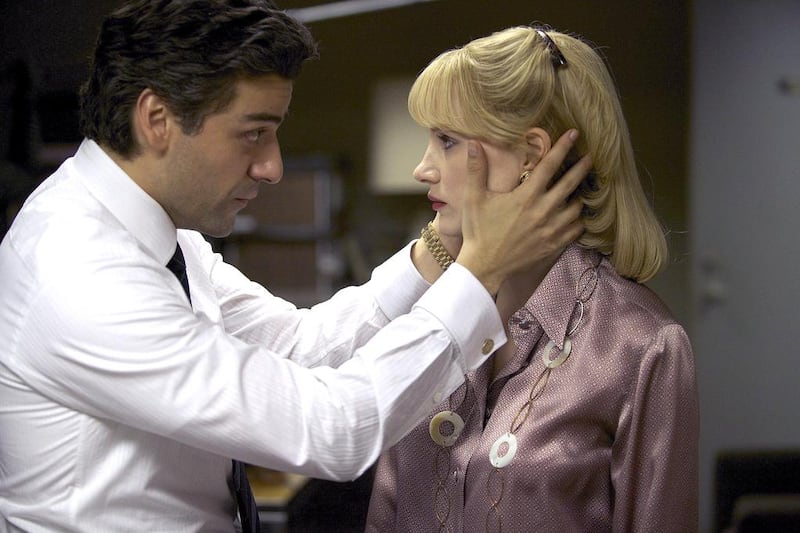The gritty thriller A Most Violent Year is one of this year's hottest independent films and looks like it will be a contender in the race for the Oscars.
Set in crime-ridden 1980s New York, the film tells the story of the immigrant entrepreneur Abel Morales (Oscar Isaac), who is trying to build an oil empire with the help of his wife (Jessica Chastain), the heiress of a fallen oil tycoon.
The movie has a restrained style that slowly builds powerful suspense amid some acerbic humour.
“For a long time I had had this idea about a husband and wife working together,” the writer and director J C Chandor says. “I wanted the hero of the film to be Hispanic, because it is the most important recent wave of immigration [in the United States].
“This movie is about ambition and that’s what immigration is about: building something better than what you’ve left behind.”
A Most Violent Year, which opened in US theatres last Wednesday but has yet to get a UAE release date, is set in 1981, which remains statistically the most violent year in New York's history, with the police completely overwhelmed.
Faced with a series of anonymous attacks against his business and employees, Morales tries desperately to protect his property and family. The businessman has few scruples and only fears failure – but he does not want to break the law, even as his wife and lawyer (Albert Brooks) push him to take more radical steps to halt the attacks.
Chandor was writing the script when the tragic shooting took place at Sandy Hook Elementary School in Newtown, Connecticut, in which a disturbed young man killed 26 people, including 20 children.
Chandor lived near the town and was struck by the thought that “it could have happened in my daughter’s school”.
“It made me think of this idea of escalation, how an act of violence ripples on society,” he says.
Morales is played by Isaac, best-known for his star turn in the Coen Brothers' Inside Llewyn Davis (2013) and who will soon be seen in the new Star Wars movie and as the main villain in X-Men: Apocalypse. His performance in A Most Violent Year evokes memories of a young Al Pacino in The Godfather.
Morales is “a person who feels like he’s in the equivalent of a war zone”, Chandor says.
The film has had rave reviews, with a 95 per cent positive rating on the aggregator website RottenTomatoes. It also won accolades at its premiere during the AFI festival in Los Angeles last month.
Chastain was nominated for the Best Dramatic Actress Golden Globe and the film is expected to receive a slew of Oscar nominations. It is Chandor's third feature film, after Margin Call, which was inspired by the financial crisis, and All Is Lost, starring Robert Redford as a solo sailor struggling to survive at sea.
In all three films, Chandor puts his characters at the heart of a crisis, with either their own survival or that of a major business – sometimes both – in jeopardy.
They are forced to make decisions about acts that go against their moral code, sometimes committed in the name of survival, as they try desperately to hold onto their ethics while not losing their souls.
His next film will tackle one of the worst disasters to hit the US in recent years.
Deepwater Horizon, starring Mark Wahlberg, will explore the explosion and sinking of the offshore oil platform operated by BP, which sparked the worst oil spill in US history. It's a "poetic, tragic take on what our relationship is with oil – which is we want it, we need it and it's getting harder to find," he says.
“We all need oil, we all use oil,” and yet “someone has to find it for us, so we are far more guilty than these people” who work in the oil industry, he adds.










